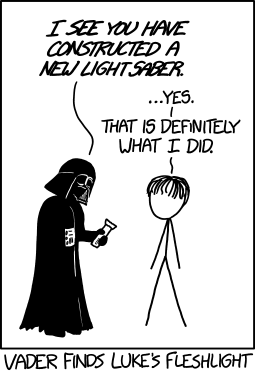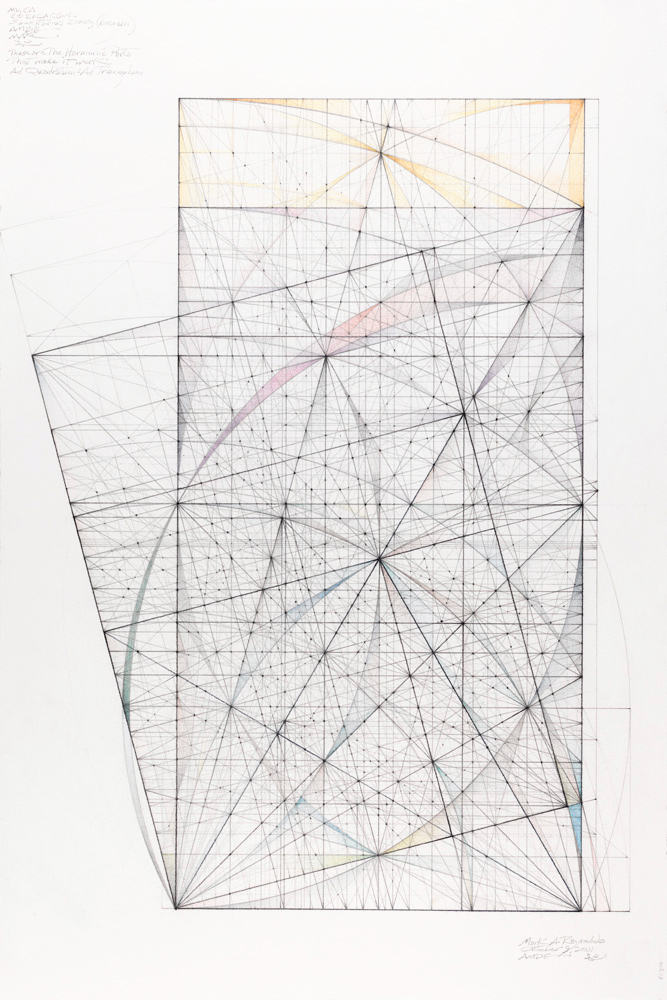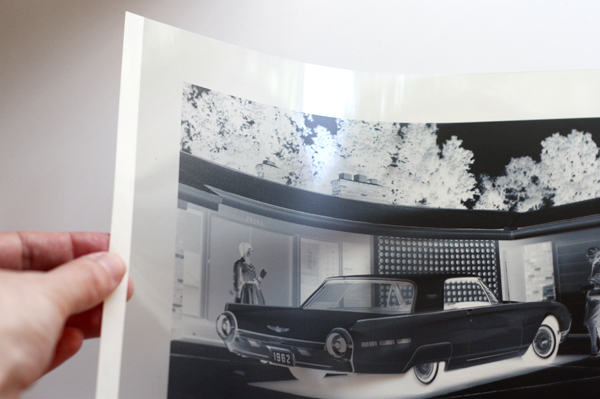
Shared posts
Secret Fore-Edge Paintings Revealed in Early 19th Century Books at the University of Iowa

Autumn by Robert Mudie / Special Collections & University Archives at the University of Iowa

Autumn by Robert Mudie / Special Collections & University Archives at the University of Iowa

Winter by Robert Mudie / Special Collections & University Archives at the University of Iowa

Winter by Robert Mudie / Special Collections & University Archives at the University of Iowa

Spring by Robert Mudie / Special Collections & University Archives at the University of Iowa

Spring by Robert Mudie / Special Collections & University Archives at the University of Iowa

Summer by Robert Mudie / Special Collections & University Archives at the University of Iowa

Summer by Robert Mudie / Special Collections & University Archives at the University of Iowa
A few days ago Colleen Theisen who helps with outreach and instruction at the Special Collections & University Archives at the University of Iowa shared an amazing gif she made that demonstrates something called fore-edge painting on the edge of a 1837 book called Autumn by Robert Mudie. Fore-edge painting, which is believed to date back as early as the 1650s, is a way of hiding a painting on the edge of a book so that it can only be seen when the pages are fanned out. There are even books that have double fore-edge paintings, where a different image can be seen by flipping the book over and fanning the pages in the opposite direction.
When I realized the book Theisen shared was only one of a series about the seasons, I got in touch and she agreed to photograph the other three so we could share them with you here. Above are photos of Spring, Summer, Autumn and Winter which were donated to the University of Iowa by Charlotte Smith. How much fun are these? Keep an eye on the University of Iowa’s special collections Tumblr as they unearth more artificats from the archives.
Update: Because this post is getting so much attention, here are some more amazing fore-edge paintings found on YouTube.
Randall Munroe finishes "Time," the 3,099-panel XKCD serial

Randall Munroe has finally finished Time, his 3,000+ frame slow-motion animation that began life as wordless, enigmatic single-panel XKCD installment. Since then, the panel has been slowly, slowly updating itself, running out its course over several months. Geekwagon has collected the whole series in an easy-to-control window, and the story, taken as a whole, is a beautiful and odd existentialist parable touching on the discovery of geographic knowledge; cultural first contacts; environmental disaster, friendship and ingenuity. (Thanks, @dexitroboper!) ![]()
Robotic Nikon cameras capture Wimbledon 2013

In the aftermath of Andy Murray's historic victory at Wimbledon 2013, Nikon UK has been explaining how its cameras were used in a robotics setup to capture images from unique angles during the championship. The system was developed in partnership with Mark Roberts Motion Control, and operated by photographer Bob Martin. It used a Nikon D4 mounted on the roof above Centre Court, with 200-400mm and 80-400mm lenses. Click through to see some of the resultant images.
This Is Mirror's Edge In Real Life. It Is Terrifying
I can’t tell if these guys are imitating Mirror’s Edge, or if this video is just a testament to how well the game captured what parkour feels like. Either way, this first person Parkour video is so much like Mirror’s Edge that it’s actually a little bit terrifying.
There’s even moments that feel like it is straight out the game — like the first moment you slide down a rooftop in the game, or hurdle a fence — this real life video seems to imitate the animations in the game, or is it the other way around.
I can’t decide. Either way, this video needs more red, otherwise the poor bastards won’t know what direction to run.
You have to watch this video. It’s the greatest thing I’ve seen all day. Easily.
Tomás Saraceno Launches You into the Sky with His Latest Suspended Installation “In Orbit” at K21 Staendehaus

© Studio Saraceno & Kunstsammlung NRW

© Studio Saraceno & Kunstsammlung NRW

© Studio Saraceno & Kunstsammlung NRW

© Studio Saraceno & Kunstsammlung NRW

© Studio Saraceno & Kunstsammlung NRW

© Studio Saraceno & Kunstsammlung NRW

© Studio Saraceno & Kunstsammlung NRW
In one of his most ambitious suspended installations to date, artist Tomás Saraceno (previously) launches visitors at the K21 Staendehaus museum in Düsseldorf more than 65 feet (20 meters) above the main piazza with a taunt, multi-level web of netting. Titled In Orbit the giant interactive piece is constructed from three separate levels of safety nets accessible from various points in the museum separated by enormous PVC balls measuring almost 30 feet (8.5 meters) in diameter. The resulting aerial landscape is an interesting hybrid between science fiction, spider webs, neural pathways and cloud formations.
Known for breaking the boundaries between art and science, Saraceno often refers to his interactive pieces as living organisms. In fact, over a period of three years Saraceno consulted with arachnologists (experts in the study of spiders), as well as architects and engineers to achieve the final design for In Orbit. Via the museum:
This floating spatial configuration becomes an oscillating network of relationships, resonances, and synchronous communication. When several people enter the audacious construction simultaneously, their presence sets it into motion, altering the tension of the steel wires and the intervals between the three meshwork levels. Visitors can coordinate their activities within the space, and are able – not unlike spiders in a web – to perceive space through the medium of vibration. Saraceno himself speaks of a new hybrid form of communication.
The installation opened to the public starting today. To enter In Orbit patrons must be at least 12 years old and are asked to wear special grip-soled footwear while traversing the webbing. You can read much more over on Art Daily. All imagery courtesy K21 Staendehaus.
Someone help.

And there’s still so much I’ve left off. Standards (the lack thereof, really) have failed us. There’s money to be made! Tell us what your biggest gripe is on Facebook, or Twitter, or you know, any of the other ten trillion services there are. I need a nap.
Comic for June 24, 2013
When Did You Earn Your Degree?

I’d make fun of all you people who went to college before Wikipedia was invented, but you probably wouldn’t hear me over all the student loans you don’t have.
It’s complicated





Hey all, yet another episode drawn on a VAIO Duo. Can you tell any difference from the regular episodes?
A snow covered double header coal train finishes its run,...

A snow covered double header coal train finishes its run, November 1918.
Photograph courtesy the International Film Service
Wait a Minute...
Submitted by: Unknown
Surrender to a logic more powerful than reason






 Folkert
Folkert
The 35 Most Spectacular Wildlife Photos From The National Geographic Photo Contest
Video: OS X Mavericks’s enhanced multi-monitor mode demonstrated
One of OS X Mavericks’ premier features is the ability to use different full-screen apps on different displays in a multi-monitor setup. The enhancement over previous versions of OS X also allows the Mac Dock, Mission Control, and Menu Bar functions to be accessed on each individual monitor.
YouTube user MrThaiBox123 filmed a video of the new functionality in a setup with six monitors (via @DetroitBORG). The narrator discusses some of the pros and cons of the new feature, and the video is worth a view for anyone interested in the new capabilities.
Keep in mind that OS X 10.9 is currently in its first developer preview, so any of the issues described in the video above could be rectified by the fall release date.
In addition to the above feature, Mavericks also includes improved Finder functionality, Maps and iBooks apps, and various performance improvements.
Sigma 18-35mm F1.8 DC HSM available in July for around $799 / £800

Sigma USA has announced its 18-35mm F1.8 DC HSM Art lens for APS-C DSLRs - the world's first constant F1.8 zoom - will be available from July at a street price of around $799. Meanwhile the recommended retail price will be £799.99 in the UK, and €999 in Europe. The company has also said the lens will be available for Pentax and Sony mounts, as well as the Canon, Nikon and Sigma mounts originally announced. It covers a 27-52.5mm equivalent range and offers the depth-of-field of a constant F2.7 lens on full-frame. Click through for more information and to link to our first impressions of shooting with the lens.
No more roaming fees in Europe as of July 2014
Good news for anyone living in any of the 27 EU countries: as of next July, you’ll pay the same rate for calls and data when travelling within Europe as you do at home, reports The Telegraph.
Consumers will next year be able to use their mobile phones across the European Union for the same price as at home, it is planned, after officials voted to fast-track major reforms of telecoms regulation.
Roaming fees for voice calls, texts and internet access will effectively be completely scrapped under the proposals, which are part of a broader effort to create a single European telecoms market …
Roaming fees can often be extortionate, with call fees of over £1 ($1.56) per minute, and data charges which can easily rack up hundreds of pounds for quite ordinary usage. The banning of roaming fees applies only for European customers: customers from the USA and other countries will still pay roaming charges when visiting Europe.
The EU estimates that carriers will initially see a 2 percent drop in revenue, but expect it to benefit them in the longer term by encouraging greater use of mobiles while travelling and by making it possible for networks to attract customers across borders.
Samsung announces the Galaxy S4 zoom, sporting a 16-megapixel camera and 10x optical zoom

Samsung has just announced another new addition to its smartphone line-up, the Galaxy S4 zoom, a modified version of its flagship and best selling Galaxy S4 that includes a 10x optical zoom, 13-megapixel CMOS censor and Xenon flash.
The device is aimed squarely at those with a passion for photography, and it includes a 16-megapixel camera, that’s a significant increase on the Galaxy S4′s 13-megapixel shooter. That’s puts the device (and this is very much a phone) on par with the original incarnation of the Galaxy Camera, which also had a 16-megapixel snapper. The zoom includes a 1.9 megapixel camera on the front.
“The GALAXY S4 zoom is the realization of Samsung’s mission to create a single device that can fulfil the role of both an industry leading smartphone and a high-end compact camera,” the Korean phone-maker said in a statement.
Getting down to technical details, the S4 zoom is powered by a 1.5GHz dual-core processor and has a 4.3 inch qHD super AMOLED screen with a 960×540 resolution. Like the regular S4, it runs on Jelly Bean (Android 4.2).
The device comes with 8GB of internal memory which Samsung — sticking to its new policy of openness — says gives around 5GB of usable memory. Given the spanking new camera and the quality of images it is capable of snapping, it therefore follows that owners of the phone will be taking advantage of the micro-SD slot, which takes cards of up to 64GB.
The Galaxy S4 shipped 10 million units in its first month — a new record for Samsung — but the zoom version is likely to be even more appealing to fans of high-end devices, although it remains to be seen how it will be priced and therefore perform among the average smartphone-buying public.
The S4 zoom is latest in a steady stream of new launches from the world’s biggest smartphone seller. Only yesterday it introduced the the Galaxy Ace 3, and recent weeks have seen it unveil two new Galaxy Tab 3 devices, the Galaxy S4 active, and the Galaxy S4 mini.
Headline image via sweetlabs / Flickr
Brilliant, crazed Brit straps a jet engine onto a bike and rides it to ludicrous speeds

You haven’t done anything this crazy, I can all but assure you. For fun, it would appear, and the adulation of YouTube viewers, Colin Furze built a jet bike. Or, it’s a bicycle, with a decidedly homebrew-esque jet propulsion system strapped to the back.
Strapped might be generous. Perhaps ‘tacked’ would be more apt. It’s just as bonkers as you will expect. But it goes, and damn fast. The contraption can hit 50 miles per hour. The Washington Post calls Furze an inventor, and we agree.
On his site, Furze has build details. It’s Wednesday, so take the break and watch this guy somehow not break his neck:
Top Image Credit: Colin Furze / colinfurze.com
Make photographic fabric prints with Inkodye
I inverted the image in Photoshop to make it a negative and printed it on some old 3M CG3460 inkjet transparency film I found in my closet.
Go to the online image editor Pixlr. Choose "Open image from computer" to upload your photo. From the top menu, choose "Adjustment">"Desaturate" to make the image black and white. Then select "Adjustment">"Invert" to create a negative image. You can also play with brightness, contrast, or levels to get dark blacks and bright whites for good printing. Finally, choose "File">"Save."
If you need larger negatives, try splitting your image in half, printing on two sheets, and taping them together.
Mix Inkodye with water in a 1:1 ratio to stretch it farther; you'll get the same vibrant color. Or add even more water to get lighter colors. Mix colors to create new hues if you want.
Astounding Origami by Nguyen Hung Cuong








Paper artist Nguyễn Hùng Cường lives and works in Hanoi and folds many of his original, distinctly expressive origami works using a Vietnamese handmade paper called Dó. Cường tells All Things Paper that he began folding around the age of five or six and although his work has been featured in numerous popular books on origami, he has not yet made it his full-time career. See much more of his work on Flickr. All photos courtesy the artist. (via all things paper)
Visualizing the Stunning Growth of 8 Years of OpenStreetMap
The U.S. OpenStreetMap community gathered in San Francisco over the weekend for its annual conference, the State of the Map. The loose citizen-cartography collective has now been incrementally mapping the world since 2004. While they were taking stock, it turns out the global open mapping effort has now mapped data on more than 78 million buildings and 21 million miles of road (if you wanted to drive all those roads at, say, 60 miles an hour, it would take you some 40 years to do it).
And more than a million people have chipped away at this in an impressively democratic manner: 83.6 percent of the changes in the whole database have been made by 99.9 percent of contributors.
These numbers come from the OpenStreetMap 2013 Data Report, which also contains, of course, more maps. The report, created by MapBox, includes a beautiful worldwide visualization of all the road updates made as OpenStreetMap has grown, with some of the earliest imports of data shown in green and blue, and more recent ones in white. You can navigate the full map here (scroll down), but we've grabbed a couple of snapshots for you as well.
Here is the key: 

New York
London
Tokyo
Rio de Janeiro
Paris
All maps courtesy of MapBox.










































